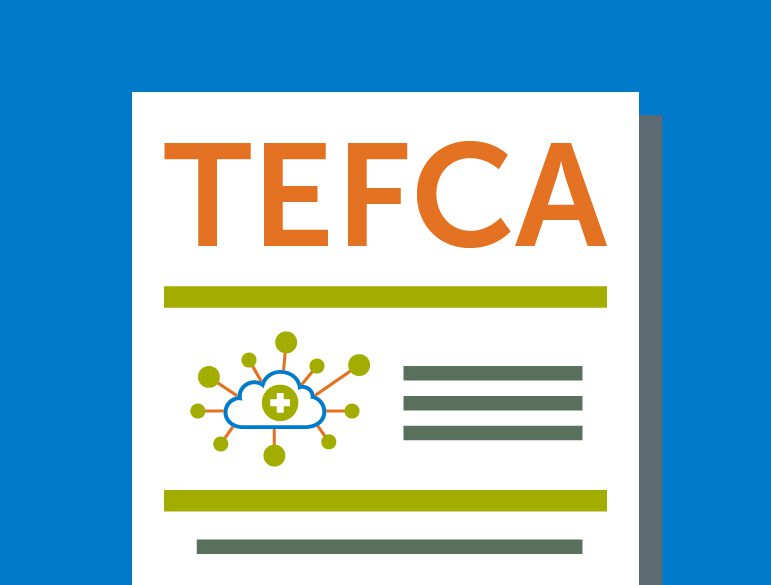
Written by David Navarro, Senior Director of Data Science, Harmony Healthcare IT
Interoperability challenges have troubled the healthcare industry for many years. There have been many efforts and countless standards, specifications, and implementation guides developed by respected organizations such as HL7, IHE International, The Sequoia Project, and The CommonWell Health Alliance. These efforts involved countless implementation attempts by organizations and vendors with varying degrees of success. Today, organizations are successfully exchanging data at the community, state, and regional levels; however, the lack of a single coordinating entity has prevented nationwide healthcare interoperability.
Until now.
TEFCA, A Definition and List of Participating Entities
Expected to coordinate the effort to enable nationwide healthcare interoperability, TEFCA is the Trusted Exchange Framework and Common Agreement released by the Office of the National Coordinator for Health Information Technology (ONC) in January of 2022. TEFCA represents the fulfillment of the 2016 21st Century Cures Act to develop a trusted exchange framework and a common agreement to facilitate the exchange of health data across a national network.
Here is a breakdown of TEFCA:
The ‘TEF’ of TEFCA stands for Trusted Exchange Framework, which is a broad document describing the high-level foundation for trust policies and practices that should be implemented to facilitate exchange among health information networks (HINs). These are also known as the ‘Principles for Trusted Exchange.’
The ‘CA’ of TEFCA stands for Common Agreement. This is a legal agreement that defines the baseline legal and technical requirements for securely exchanging data on a nationwide scale. This document also describes the different roles of participation in TEFCA. It is expected that most health systems will fall into the ‘Participant’ level category and will not be required to sign this specific agreement. As TEFCA infrastructure progresses, the expectation is that some form of legal agreement will filter down to ‘Participants’. Below is a list of participating entities defined by the Common Agreement:
- Recognized Coordinating Entity (RCE)
- Responsible for developing, implementing, and maintaining the Common Agreement component of TEFCA.
- Currently, this role is filled by The Sequoia Project.
- Qualified Health Information Network (QHIN)
- QHINs are the implementers of the technology backbone for the nationwide network. They will implement technical capabilities to connect Participants on a nationwide scale.
- QHINs are responsible for implementing and enforcing the technical specification known as the QHIN Technical Framework (QTF).
- As of January 2022, these roles are pending and are expected to be filled Q2 2022.
- Participant (most organizations will fall into the ‘Participant’ category)
- A participant is defined as a Covered Entity or a Business Associate that has entered into a Participant-QHIN Agreement. The participant agrees to transmit or receive information via QHIN-to-QHIN exchange. This can be a health system EHR, Health Information Exchange, or anyone else who connects to the QHIN.
- As of January 2022, these roles are pending the selection of QHINs.
- Sub Participant
- Can be considered members of the health system EHR or other ancillary systems within the Participant organization. This includes persons or entities that use the services of a Participant to send and receive electronic health information (EHI).
- As of Jan 2022 – These roles are pending the enrollment of Participants.
TEFCA’s First Iteration and the Role of FHIR
The first iteration of TEFCA focuses on document-based query and message delivery by leveraging the Integration for Healthcare Enterprises (IHE) International Integration Profiles to query and retrieve HL7 CDA documents for patients.
In general, an organization must be able to support the following or partner with a system that stores CCDA documents (including legacy data) accessible via IHE transactions. Requirements include:
- The ability to create HL7 CCDA documents in accordance with the Transitions of Care 2015 Edition Cures Update 08-02-2021 §170.315 (b)(1).
- An IHE Gateway and underlying infrastructure to support the following IHE Gateway profiles (IHE XUA, IHE XCPD, IHE XCA, IHE ATNA) for CCDA documents.
The first iteration of TEFCA focuses on document-based exchange and does not implement Fast Healthcare Interoperability Resources (FHIR) as an interoperability method. FHIR is on the TEFCA roadmap with work beginning in 2022 to integrate FHIR into TEFCA. For more information, see the Roadmap for TEFCA Exchange for planned FHIR Integration.
Organizations should not delay the implementation of FHIR capabilities and keep moving forward to meet the 21st Century Cures Act requirement for Standardized API for patient and population § 170.315(g)(10). The development of a FHIR infrastructure and strategy will converge and complement the efforts set forth by TEFCA.
The Time for Interoperability Planning is Now
With the final draft of TEFCA complete and the QHIN selection and onboarding forthcoming, the time for interoperability planning and execution is here.
Harmony Healthcare IT, a data management firm that moves and stores patient, employee, and business records for healthcare organizations, can help. Whether you are preparing active or legacy patient records for interoperability, our team of data experts may be called upon to assist with the development of your strategy and contemplation of how legacy data will play a role.
Let’s connect to discuss your health data management planning for TEFCA and beyond.
 As Senior Director of Data Science at Harmony Healthcare IT, David Navarro drives interoperability initiatives and focuses on the curation and accessibility of data in the healthcare ecosystem.
As Senior Director of Data Science at Harmony Healthcare IT, David Navarro drives interoperability initiatives and focuses on the curation and accessibility of data in the healthcare ecosystem.






